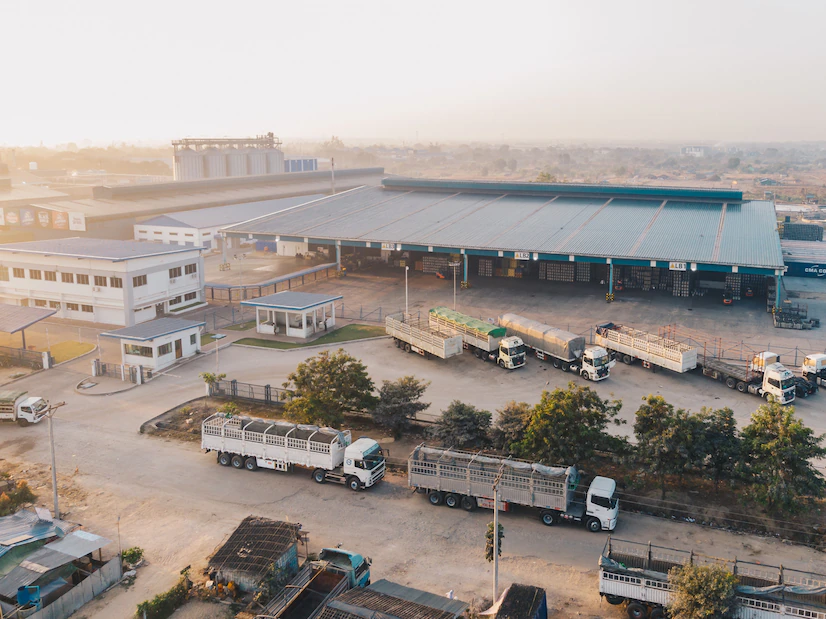A Comprehensive Guide To Top HR Challenges In The Transportation Industry — And How To Address Them
5 Mins Read
Published on: 09 June 2023
Last Updated on: 11 November 2024

toc impalement
Transportation was already essential to modern life; the pandemic has highlighted its significance. The transportation and logistics sectors have been front and center since the supply chain came to a standstill due to the COVID-19 epidemic.
During lockdowns, the forced shutdown of non-essential retail businesses and all on-site hospitality for six months resulted in a decade’s most significant increase in e-commerce sales.
News blared about delayed shipments and product shortages. However, one long-standing industry issue got steadily worse: truck driver scarcity.
COVID has influenced more than just demand and operations. In the last few years, the American Trucking Association predicted that the driver shortage would reach a historic high, totaling more than 160,000 drivers in 2030. The scarcity is caused by an aging workforce retiring and drivers relocating to other businesses offering better work-life balance.
The industry is battling for talent as other industries transition to remote work or introduce new opportunities that provide comparable compensation and a career that does not need driving all night. Customer support representatives accept calls from home. Meanwhile, large warehouses built during the COVID era let staff spend their off-hours at home rather than on the road.
People now have many more alternatives with much more flexibility, and it doesn’t take a lot of effort. All of this has added to tremendous challenges for the HR teams in the transportation industry. Let’s look at some of these challenges that HR in transport industry face an how to overcome them.
Top HR Challenges In The Transportation Industry
Challenges in HR are one of the mainstays of the job profile. You never really know the problems that you need to handle. However, having a small section listing all the essential HR challenges will help you understand what you can expect.
Worker Retention
Transportation companies need workers and drivers desperately. However, the challenge of worker retention has existed in this industry. According to a US Bureau of Labor Statistics report, the industry’s quit rate has changed to 3.4 in 2022. Owing to various factors such as work-life balance problems, severe workloads, and other work-related concerns.
Strategies For Worker Retention
- HRs should think about employee benefits. Try to be proactive, give out bonuses, and be flexible with the work-life balance for employees. This may also include letting employees work from home and using the latest technologies like payroll systems to make their work easier.
- HR managers need to reconsider their requirements. They should hire persons with a criminal record for jobs like laborers, janitors, and customer service reps. This will increase the candidate pool.
- Updating technology is extremely important to adapt to the challenges in today’s marketplace. The sector’s culture must be updated to recruit technology-savvy individuals and maintain strong employee engagement.
- HR management may create possibilities for skill development through community college classes or mentoring programs for employees who want to advance in their careers.
Employment In This Industry Isn’t Considered Worthwhile
Some individuals see truck driving, for example, as a career that requires a lot of sacrifices, such as being away from family and friends for an extended period.
But, the salary does not show appreciation for such sacrifices and efforts. Many are also unaware of the prospects available in the trucking business. Over-the-road truck driving employment, for example, is available.
Strategies For Improving View Of The Transportation Industry
- Transportation and logistics firms must reposition themselves to emphasize offering more than simply a job. One method to rebrand is to show how individuals can advance internally from warehouse worker to manager or from long-haul trucker to onsite supervisor.
- HR in transport industry may also foster a culture of rewarding employees for their efforts and giving them chances for skill development.
Poor Communication
The growing demand has impacted the communication of the trucking business. This necessitated workers working longer hours than usual.
Communication may be neglected as a result of being overburdened with tasks.
Strategies To Reduce Poor Communication
- HR managers must prioritize efficient and effective communication with all employees for work to go as it should. This will help employees to execute their duties without pressure.
- HR management must also guarantee that all employees feel valued. Poor communication can make employees feel neglected and unimportant to the firm.
- Applying various technologies like ELDs can also be beneficial. These devices can be used to check the HoS of drivers and prioritize their safety via real-time monitoring.
Culture Of The Company
Most employees want to work for a firm whose culture matches their own. People like to investigate a company’s culture before applying for a position. Individuals may be competent for a position but will stop using it if the company’s culture does not connect with strategies To Improve Company Culture.
- HR in transport industry may foster a friendly business culture by ensuring effective communication between employees and supervisors.
- The management should also develop the practice of recognizing and rewarding employees’ efforts.
- HR in transport industry should also focus on assisting employees in understanding their value to the firm, such as how they contribute to achieving the company’s goals.
Failing To Maintain The Compliance
Trucking companies must adhere to many government regulations, from driver breaks to driving-hour constraints. This can need reams of paperwork.
Transportation and logistics organizations that do not have the proper procedures to track a driver’s activity risk falling out of compliance and risking fines and other penalties.
Strategies To Properly Maintain The Compliance
- HR management can use technologies that limit the company’s risk and avoid non-adherence to rules. Platforms can track drivers’ activity in real-time. Subsequently, vehicles may even be outfitted with gadgets that track their travels and give executives the data they need to maintain compliance.
- Businesses may invest in real-time payroll systems and have clear salary payment and reward package procedures.
Conclusion
As important as the transportation business is to the global economy, problems are unavoidable. It is up to a company’s HR administration to anticipate and solve the difficulties spanning numerous areas appropriately.
Because of technological advancements, there are several digital answers to various challenges today. HR managers need to browse to determine what works best for their organizations.
Read Also:


















Comments Are Closed For This Article